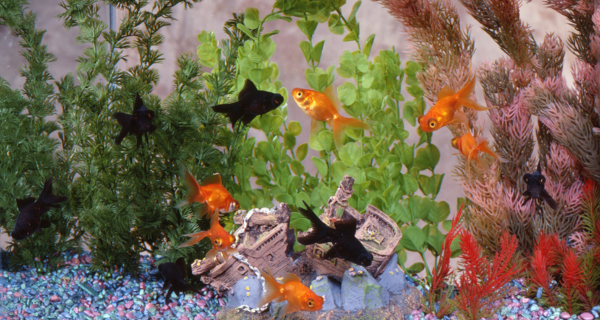
WHY IS IT THAT A DIRTY TANK IS A GOOD TANK?
(A guide to hassle free Aquarium maintenance)
Article supplied by Russell Morris of GeoFlex for The Pet Directory
In this article, we cover the main problems that people come across with aquarium maintenance, their causes, and how to prevent them occurring in the first place by eliminating the root cause of the problem. I will explain the way the bacteria work to keep the mini ecosystem in your tank working like clockwork, just like any natural lake, river, stream or ocean.
Keeping a home aquarium should be an immensely pleasurable, virtually hassle free pastime. A good, well set up sparkling clear aquarium brings a feeling of life, energy, and never ending motion to any room. The goings on in an aquarium are eternally fascinating for young and old alike.
However, the reality is that many people find keeping an aquarium a never ending source of frustration, hassle and anguish as the water forever goes cloudy, the fish continually get sick and die, and the whole area around the aquarium always looks like a disaster area. Too often an aquarium is a source of never ending heartache.

But take heart, MAINTAINING A HEALTHY VIBRANT AQUARIUM IS DEAD EASY! All you need is a few very basic tools, a little basic knowledge, a couple of minutes a day to feed the fish, (skipping a few days every now and then is no problem.) and maybe 20 minutes once every couple of weeks for maintenance. KEEPING FISH IS A PIECE OF CAKE!.... If you do the right things.
The list of things to do is very short. (Contrary to what many people will tell you.)
1. You need to feed the fish every day, (At least most days.)
2. You need to change some of the water every now and then. (Weekly to Monthly depending on your aquarium and your personal level of conscientiousness.)
3. You need to clean out the Filter occasionally. This only needs doing when the filter medium is getting really gunky, maybe every few months if your filter is reasonably large.)
4. You need to scrape the algae and stuff off the inside of the front glass occasionally. (This is only important for you to see the fish, apart from that, the algae is actually good for your aquarium.)
5. Learn about how the essential bacteria do all the hard work for you. (This will be covered in detail in later issues.)
That’s all there is to it. Everything else is superfluous, unless of course you are into breeding really exotic species, or a marine aquarium or something equally technical.
As in many areas of life, setting up and maintaining an aquarium can only be successful if you stick to the KISS principle. (Keep It Simple Stupid!!)

In this article, I will only cover the first two points.
FEEDING FISH: Your aquarium shop will be able to supply you with the appropriate food for whatever kind of fish you keep.
THE CARDINAL RULE IS: Never, Never, NEVER over feed the fish!!!
If they don’t eat it all in a few minutes, you are giving them too much!!! Overfeeding is the biggest cause of problems. It just overloads the biological waste disposal system, and ruins water quality, which in turn kills fish..........ENOUGH SAID!!!!.
CHANGING THE WATER: Because of the gradual build up of Nitrates, and other natural waste products in the aquarium, regular water changes are essential for the vast majority of regular home aquariums.
The rules are simple...
1. Never change more than about 30% of the water at one time.
2. Make sure you don’t kill the fish with sudden temperature shock.
3. If you live in an area with a lot of Chlorine and chemicals in the water, use a Chlorine and Chloramine neutralizer.
4. To create perfect water conditions and eliminate the root cause of 90% of all the problems you are ever likely to come across, add the appropriate kind of GEO LIQUID to the aquarium when you change the water. (I must declare a pecuniary interest here, as I work for the manufacturer of this unique product, but I still stand by this suggestion. Nothing makes fish keeping as easy as GEO LIQUID does.)

The best way to change water is with a gravel siphon. A length of
Hose with a large diameter, usually clear tube attached to the end that goes in the water. If you don’t have one, I suggest you buy one from your local aquarium shop. They are cheap, and will last forever. With a modicum of care, it is easy to do water changes without any mess or fuss using one of these simple tools.
When the large diameter tube is pushed into the gravel, it will suck up all the sediment and waste build-up from the gravel, and leave the gravel behind. With a little practice, you can clear out nearly all the gunk from the bottom without stirring up the water at all hardly. Either siphon the water into buckets, or if practical, attach a longer hose to the other end, and run it out a window into the garden or a sink or somewhere. This will depend on the position of the aquarium in your home.
If you are also cleaning out the filter system, then save half a bucket of water from the aquarium to rinse out the filter material. (NEVER,NEVER,NEVER, USE TAP WATER FOR THIS!!!!! THE CHLORINE IN THE TAP WATER WILL KILL THE ESSENTIAL BACTERIA IN THE FILTER, AND YOU WILL HAVE NO END OF PROBLEMS UNTIL THE BACTERIA HAVE RE-ESTABLISHED THEMSELVES. . THESE BACTERIA ARE THE MOST IMPORTANT PART OF YOUR FILTRATION SYSTEM. DON’T THROW THE BABY OUT WITH THE BATHWATER)
Don’t replace the filter material unless it is hopelessly clogged. (Unless it is made of activated carbon, in which case it needs to be discarded or replaced regularly.) This old filter material is where most of the essential bacteria live. The key to keeping a successful aquarium is to keep the bacteria happy. If you remove or kill the bacteria for any reason, you will have no end of problems with your aquarium.
It is always best to age tap water for a day or two before adding to the tank so that Chlorine and other volatile organic chemicals can dissipate naturally. If this is impractical, then you can use a hose directly into the tank, or use buckets. (Be very careful of the water temperature, and make very sure that you do not change the temperature more than a couple of degrees. Sudden changes in water temperature are more likely to kill the fish than any level of Chlorine. However it is usually the Chlorine that is blamed if fish die soon after a water change.
If using a bucket, very, very slowly run the water down the glass or in a corner of the aquarium so that it doesn’t stir up the tank. A garden watering can or some kind of kettle is convenient for this. A saucer placed on the bottom of the tank will stop the down current, and prevent it stirring up the bottom too.
The main thing is to do it slowly and gradually so that there are no sudden changes in the Fish’s environment, or they may die from temperature shock. Always try to minimize the stress to the fish.
If you live in an area where there is a very high concentration of Chlorine or other chemicals in the water, then adding a Chlorine neutralizer is a good idea as a precaution, but generally it is best to avoid adding other unnecessary chemicals to the water. Keep it as natural as possible.
GEO LIQUID added to the water either at the same time, or just before adding the water will mop up any other residual chemical contaminants, and just as importantly, add all the essential trace elements and minerals needed to create ideal water conditions not only for the fish, but for all the plants, invertebrates, and essential bacteria in the filter. It is just a matter of choosing the kind of GEO LIQUID that is best for your particular kind of fish.

"KEEPING A HOME AQUARIUM SHOULD BE AN IMMENSLY PLEASURABLE, AND VIRTUALLY HASSLE FREE PASSTIME."
Why Bacteria are your friends?
The key thing to remember is that you need to keep the untold millions of bacteria that break down the waste products in the aquarium happy. Forget about the fish, ..….. all they need is some food (But not too much.) to keep them happy. If you keep the bacteria happy, they will look after everything else for you. The bacteria are your friends!! If they are not happy, they will not work, and your aquarium will degenerate into a nasty downhill spiral of worsening water quality, ill-health, and slow lingering death for everything in your aquarium.
Checklist
1. Make sure your filtration system is adequate for your aquarium, if you are not sure, then it probably isn’t. The bigger the filtration system, the better it will work, and the better it will handle unexpected loads if anything does go wrong. So spend the money in the beginning for a larger filter than the minimum. Remember that filter manufacturers often tend to overstate their product’s rated capacity.
2. Buy the biggest aquarium you can afford, or have space for. The bigger the aquarium, the fewer problems are likely to occur, and the easier they are to look after. (Assuming the filtration is also suitably large enough.)
3. Make sure you have a gravel siphon, (A cheap tool available from any Aquarium shop.) to do regular water changes. (Weekly to monthly is about right, depending on your aquarium and your own level of personal concientiousness. 20% to 50% water changes, at most, are recommended for most aquariums.) Small, regular water changes are simple and easy. Major cleanouts are rarely, if ever, necessary if small water changes are done on a regular basis.
4. Squeeze out, or rinse the filter medium occasionally when they are starting to get clogged with “gunk”. BUT: NEVER, NEVER, NEVER rinse out the gravel, or the filter material with tap water!!!!! The Chlorine and other chemicals will kill the essential bacteria living in the material, and you will have no end of problems afterwards. This, (along with over feeding fish.) is the biggest cause of problems in aquariums. Simply squeeze or rinse out the filter medium in a bucket of water you have siphoned out of the aquarium while doing a water change. This way you will not throw the baby out with the bathwater!!!!
5. Remember, if you have the mindset that you are culturing bacteria rather than keeping fish, you will rarely have any problems.
6. Always use a Chlorine neutralizer when using tap water, and I always recommend using the appropriate variety of GEO LIQUID as well. This will create the right conditions for optimum biological activity in the aquarium. (I must admit to a pecuniary interest, as I work for the manufacturer of GEO LIQUID, but I still stand by this recommendation. GEO LIQUID makes fish keeping easy if you follow the above simple steps.)
How the bacteria work to keep the aquarium healthy!
The essential bacteria that live in the filter and in the substrate are the powerhouses of the finely balanced mini eco-system in your aquarium. They break down otherwise toxic wastes produced by your fish into harmless end products.
The bacteria and other micro-organisms that live in the substrate and filter are known as the micro-flora. There are literally thousands of different species, and they all have a part to play in maintaining the health of the aquarium, and they all work together in an interdependent web of life.
The main waste product that is of concern in aquariums is Ammonia, which is produced by all living things as a by product of protein metabolism. We pass our Ammonia out through our urine. Fish pass it out through their gills directly into the water. Even more Ammonia is produced from fish excreta and uneaten food (That is why you shouldn’t overfeed your fish!!!) as bacteria break down the protein in it.
Ammonia is toxic!! The moment you put a fish into a new aquarium, it starts pumping Ammonia into the water. The level of Ammonia would keep increasing until it killed the fish if bacteria didn’t intervene and break it down harmlessly.
These bacteria are collectively called soil bacteria. There are 2 main types of bacteria that are critical to the health of an aquarium. The first is called Nitrosomonas and it eats Ammonia, and breaks it down to a chemical called Nitrite.
The problem is that Nitrite is about 50 times more toxic than Ammonia!!
Another bacteria called Nitrobacter then eats the Nitrite, and turns it into relatively harmless Nitrate. Nitrate is the form of Nitrogen that plants use to build up new protein. And in nature the cycle repeats itself forever. This cycle is known as the Nitrogen cycle, and keeping this cycle running smoothly is of critical importance to keeping a healthy aquarium.
Both Nitrosomonas, and Nitrobacter live on the surfaces of hard objects. They do not normally float around in the water. So, in order for large numbers of these essential bacteria to live in the aquarium, they need a large solid surface area to live on. Many more of these bacteria are needed in an aquarium than are needed in nature, because the bio-load in an aquarium is generally much higher than in a natural ecosystem.
Think of it this way:….. If you scooped up 100 litres of water out of a lake, the chances of catching even a single fish are pretty remote, but 100 litres of water in an aquarium may easily have 50 or more fish in it. So the volume of Ammonia entering the system in an aquarium is extremely high, so you need an extremely large number of essential bacteria to handle it. But the average unfiltered aquarium has very little surface area for the bacteria to live. Only the glass, (Which is often scraped clean.) a bit of gravel, and a few plants. So without a filter, an aquarium would soon become a toxic soup of nasty smelling wastes in which no fish could live.
A filter’s only main job is to provide the bacteria with a very large surface area to colonize, and to pass a constant flow of water over them, so that they can remove the wastes from the water as it flows past. A filter’s job is not simply straining particles out of the water. As a matter of fact, they work more efficiently if they don’t filter out particulates that can hinder the flow of water past the bacteria and eventually clog up the filter material.
As soon as this water flow gets restricted or the filter gets clogged, the bacteria simply stop working, and die. That is why filters are full of materials like synthetic wool, porous gravel, sponge etc. All porous materials with a large surface area. The larger the volume of filter material, the greater the filter’s capacity.
REMEMBER…. Doubling the amount of filter material doubles the filter’s capacity……… BUT…. Doubling the water flow by increasing the size of the pump has almost no effect on biological filtration capacity, unless the volume of filter material is also increased. The power of the pump is much less important than the actual volume of filter material. In the case of filters, bigger is definitely better.
If anything happens that interferes with the environment that these bacteria need to thrive, then your aquarium will very quickly turn into a toxic soup that will kill your fish.
All you need to do to have a hassle free aquarium is to rinse out the filter medium in a bucket of water that has just been siphoned out of the aquarium (Once again, the cardinal rule is to never NEVER, NEVER use tap water!!!!) before it gets too clogged, and do regular partial water changes to get rid of the build up of Nitrates that are the end product of the Nitrogen cycle. (Most aquariums do not have enough plants to absorb the Nitrates produced by all the fish.)

KEEPING FISH IS A PIECE OF CAKE!!
So, by doing small regular water changes, making sure your filters do not get clogged, remembering never to use tap water for washing filter material, and always adding a Chlorine neutralizer, (And for really problem free fishkeeping, adding GEO LIQUID as well.) at water changes, you will eliminate 90% of the root causes of any problem you are ever likely to have, provided that your filter is of adequate capacity for your aquarium.
If you find yourself constantly cleaning out your aquarium, and having problems, chances are you are doing something that is affecting the bacteria in your system, or your filter is simply not big enough.
That’s all there really is to it!! Just look after your bacteria. They are your friends!


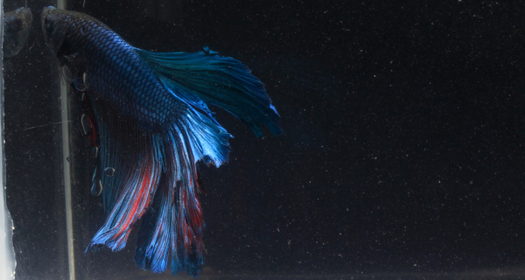
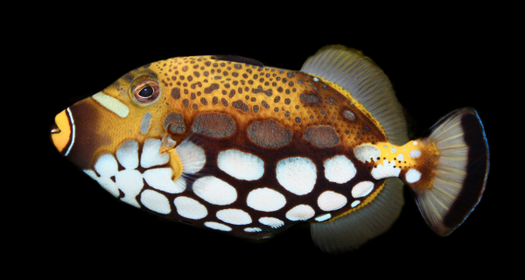
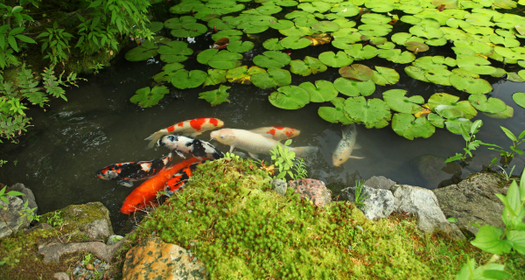
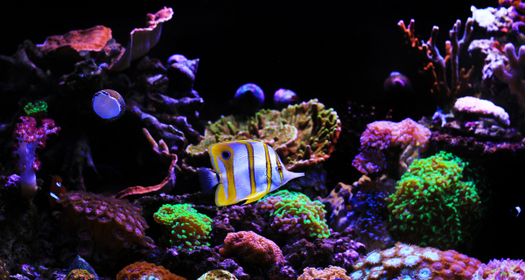



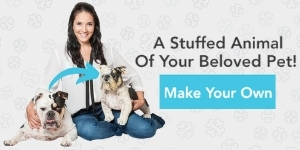
Leave Comment Below